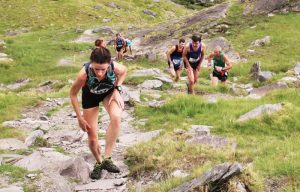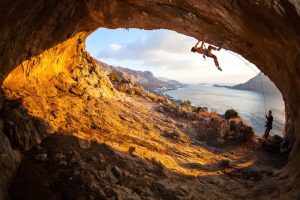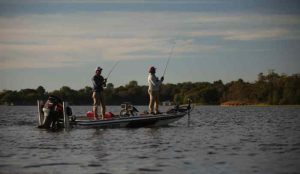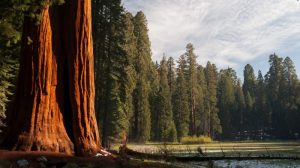Embark on a journey through the wilderness with Wildlife Watching in National Parks, where nature’s beauty and wildlife encounters await at every turn. Discover the secrets of this captivating activity that connects us with the natural world.
From the lush forests to the vast plains, national parks offer a sanctuary for diverse wildlife species, providing a glimpse into their fascinating lives and behaviors.
Introduction to Wildlife Watching in National Parks
Wildlife watching in national parks involves observing and appreciating the diverse range of animals and plants that inhabit these protected areas. It provides an opportunity for visitors to connect with nature and learn about the importance of conservation.
Preserving Natural Habitats
Preserving natural habitats in national parks is crucial for wildlife watching as it ensures that animals can thrive in their natural environment without human interference. By protecting these habitats, we can safeguard the biodiversity of these areas and maintain the delicate balance of ecosystems.
Benefits of Wildlife Watching for Conservation Efforts
- Raises Awareness: Wildlife watching helps raise awareness about the importance of preserving natural habitats and protecting endangered species.
- Educational Opportunities: It provides educational opportunities for visitors to learn about different species, their behaviors, and the challenges they face in the wild.
- Economic Value: Wildlife watching can also have economic benefits by attracting tourists and generating revenue for conservation efforts.
- Research and Monitoring: Observations made during wildlife watching activities can contribute to scientific research and monitoring of species populations.
Best National Parks for Wildlife Watching
When it comes to wildlife watching, there are several national parks around the world that offer incredible opportunities to observe unique species in their natural habitats. Here are some of the top national parks known for their wildlife diversity:
Yellowstone National Park
Yellowstone National Park in the United States is famous for its diverse wildlife, including grizzly bears, wolves, bison, and elk. The park is also home to a variety of bird species, making it a paradise for bird watchers. The best time to visit Yellowstone for wildlife watching is during the spring and fall, when many animals are active and easily spotted.
Maasai Mara National Reserve
Located in Kenya, Maasai Mara National Reserve is renowned for its population of lions, cheetahs, elephants, and wildebeest. The annual wildebeest migration, usually occurring between July and October, is a spectacle not to be missed. This is the best time to visit Maasai Mara for unparalleled wildlife viewing opportunities.
Ranthambore National Park
In India, Ranthambore National Park is a prime destination for spotting tigers in the wild. Apart from tigers, the park is also home to leopards, sloth bears, and various bird species. The best time to visit Ranthambore for tiger sightings is from October to March, during the dry season when animals gather around water sources.
Tips for Wildlife Watching in National Parks

When venturing out to observe wildlife in national parks, it’s essential to follow certain guidelines to ensure a safe and respectful experience for both you and the animals. Here are some tips to help you make the most of your wildlife watching adventure:
How to Spot Wildlife Effectively
One of the keys to successful wildlife watching is to be patient and observant. Look for signs of wildlife such as tracks, droppings, or disturbed vegetation. Binoculars or a spotting scope can also help you scan the area more effectively. Consider visiting popular watering holes or feeding areas during dawn or dusk when animals are most active.
Observing Wildlife Without Disturbing Their Natural Behavior
Respect the animals’ space and always maintain a safe distance. Avoid making sudden movements or loud noises that could startle them. Do not feed the wildlife as it can disrupt their natural diet and behavior. Stay on designated trails and never approach or attempt to touch any wild animals.
Safety Precautions to Consider
Before heading out for wildlife watching, make sure you are aware of any potential risks in the area. Be mindful of your surroundings and watch out for any warning signs or signals from the wildlife. Always carry bear spray or other deterrents if you are in bear country. Inform someone of your plans and expected return time, especially if you are venturing into remote areas.
Equipment and Gear for Wildlife Watching
When embarking on a wildlife watching adventure in national parks, having the right equipment and gear can greatly enhance your experience. Here are some essential items to consider:
Essential Gear
- Binoculars: A good pair of binoculars is crucial for spotting wildlife from a distance and getting a closer look at animals without disturbing them.
- Camera: Capture unforgettable moments and wildlife sightings with a quality camera to document your experiences.
- Field Guides: Carry field guides specific to the region’s wildlife to help you identify different species you may encounter.
Choosing the Right Clothing and Footwear
Proper clothing and footwear are essential for wildlife watching excursions to ensure your comfort and safety:
- Layered Clothing: Dress in layers to easily adjust to changing weather conditions and stay comfortable throughout the day.
- Neutral Colors: Wear clothing in neutral colors to blend in with the surroundings and avoid startling wildlife.
- Sturdy Footwear: Opt for comfortable and sturdy footwear with good grip to navigate various terrains while exploring the wilderness.
Utilizing Technology for Wildlife Watching
Technology can play a significant role in enhancing your wildlife watching experience:
- Wildlife Tracking Devices: Utilize wildlife tracking devices to locate animals more efficiently and gain insights into their behavior and movements.
- Smartphone Apps: Install wildlife identification apps on your smartphone to help identify species, learn more about them, and contribute to citizen science projects.
- GPS Devices: Use GPS devices to mark wildlife sightings, track your route, and navigate back to your starting point safely.
Wildlife Photography in National Parks

Wildlife photography in national parks offers a unique opportunity to capture stunning images of animals in their natural habitat. However, it is essential to approach this activity with respect for the animals and the environment.
Tips for Capturing Stunning Wildlife Photographs
When photographing wildlife in national parks, consider the following tips to capture stunning images:
- Use a telephoto lens to get close-up shots without disturbing the animals.
- Be patient and observe the animal’s behavior to anticipate the best moments to capture.
- Focus on the eyes of the animal to create a connection with the viewer.
- Pick the right lighting conditions, such as early morning or late afternoon for soft, warm light.
Ethical Considerations of Wildlife Photography
It is crucial to practice ethical wildlife photography to ensure the well-being of the animals and the conservation of their habitat. Some considerations include:
- Respect the wildlife’s space and avoid getting too close or disrupting their natural behavior.
- Avoid using bait or other methods to attract animals for a better shot.
- Do not alter the environment or manipulate the animals for the sake of a photograph.
Respecting Wildlife While Photographing
Respecting wildlife while photographing them involves following certain guidelines to minimize disturbance and ensure their well-being:
- Keep a safe distance from the animals and use zoom lenses to avoid intruding on their space.
- Do not feed or touch the animals, as it can habituate them to human presence and disrupt their natural behavior.
- Be mindful of the environment and stay on designated paths to avoid trampling vegetation or disturbing nesting sites.
Conservation and Wildlife Watching
When it comes to wildlife watching in national parks, there is a strong connection to conservation efforts. Responsible wildlife watching practices can play a significant role in contributing to conservation initiatives and protecting the natural habitats of various species.
Importance of Responsible Wildlife Watching
Responsible wildlife watching involves maintaining a safe distance from animals, not disturbing their natural behavior, and minimizing any negative impacts on their environment. By following these guidelines, visitors can help ensure the well-being of wildlife populations and their habitats.
- Respecting Wildlife: Observing animals from a distance allows them to go about their daily activities without feeling threatened or stressed. This respect for their space and behavior is vital for their survival.
- Preserving Habitats: By being mindful of the environment and staying on designated paths, visitors can help protect the natural habitats of wildlife from human interference and habitat destruction.
- Supporting Conservation Efforts: Responsible wildlife watching can generate awareness and appreciation for the importance of conservation, leading to increased support and funding for initiatives aimed at protecting endangered species and their habitats.
Success Stories in Conservation through Wildlife Watching
There have been instances where wildlife watching has directly contributed to positive conservation outcomes, showcasing the powerful impact of responsible tourism on protecting biodiversity.
For example, the increased interest in birdwatching in specific regions has led to the establishment of protected areas and conservation programs to safeguard critical bird species and their habitats.
- In Yellowstone National Park, the monitoring of wolf populations through wildlife watching activities has helped researchers gather valuable data for conservation efforts and understand the ecological role of these predators in the ecosystem.
- In Africa, the revenue generated from safari tours and wildlife viewing has been instrumental in funding anti-poaching initiatives and wildlife conservation projects to combat illegal hunting and protect endangered species.
- The promotion of ethical whale watching practices has contributed to the conservation of marine mammals and their habitats, emphasizing the importance of sustainable tourism for the long-term well-being of these species.
Cultural and Indigenous Perspectives on Wildlife Watching
Understanding cultural and indigenous perspectives on wildlife watching in national parks is essential to appreciate the deep connection these communities have with nature. It provides valuable insights into their beliefs, traditions, and the significance of wildlife in their lives.
Cultural Beliefs and Traditions
Many indigenous communities view wildlife as sacred beings that play a crucial role in their cultural practices and spirituality. They have traditional stories, songs, and dances that honor and celebrate the animals found in national parks. For example, the Navajo people believe that animals possess spiritual qualities and are messengers from the spiritual world.
Incorporating Indigenous Knowledge
It is important to incorporate indigenous knowledge into wildlife watching practices to ensure a respectful and sustainable interaction with wildlife. Indigenous communities have a deep understanding of the ecosystems and the behavior of animals, which can enhance our conservation efforts. By learning from their wisdom, we can better protect and preserve the natural world.
Indigenous Communities in Conservation
Many indigenous communities are actively involved in wildlife conservation efforts in national parks. They play a vital role in protecting habitats, monitoring wildlife populations, and implementing sustainable practices. By engaging with indigenous peoples, we can benefit from their traditional ecological knowledge and foster partnerships that promote the well-being of both wildlife and communities.
Impact of Tourism on Wildlife Watching
Tourism can have both positive and negative effects on wildlife watching experiences. It is essential to analyze these impacts to ensure the conservation of wildlife and their habitats.
Positive Impacts of Tourism on Wildlife Watching
- Increased awareness and appreciation for wildlife and conservation efforts.
- Support for local economies and communities through ecotourism initiatives.
- Funding for wildlife conservation projects generated from tourism revenues.
Negative Impacts of Tourism on Wildlife Watching
- Habitat destruction and disturbance caused by excessive human presence.
- Alteration of wildlife behavior due to constant exposure to tourists.
- Illegal wildlife trafficking fueled by demand from tourists for exotic souvenirs.
Sustainable Tourism Practices for Wildlife Watching
- Limiting the number of visitors allowed in sensitive wildlife areas to reduce disturbance.
- Encouraging responsible wildlife viewing guidelines to minimize negative impacts on animals.
- Supporting local conservation initiatives and community-based ecotourism projects.
Balance Between Wildlife Watching Tourism and Conservation Goals
- Developing ecotourism strategies that prioritize wildlife conservation and sustainable practices.
- Engaging local communities in wildlife tourism management to ensure long-term benefits for both wildlife and people.
- Monitoring and enforcing regulations to prevent exploitation of wildlife for tourism purposes.
Wildlife Watching and Ecotourism
Ecotourism is a form of tourism that focuses on responsible travel to natural areas, conserving the environment, and improving the well-being of local people. It promotes sustainability and educates visitors about conservation efforts.
Relationship Between Ecotourism and Wildlife Watching
- Ecotourism and wildlife watching often go hand in hand, as visitors have the opportunity to observe and appreciate wildlife in their natural habitats while supporting conservation initiatives.
- By engaging in wildlife watching through ecotourism, visitors can contribute to the protection of endangered species and their habitats.
Support for Wildlife Conservation and Local Communities
- Ecotourism initiatives provide financial support for wildlife conservation projects, including anti-poaching efforts, habitat restoration, and research programs.
- Local communities benefit from ecotourism through job opportunities, cultural exchange, and the preservation of traditional knowledge and practices.
Examples of Successful Ecotourism Projects
- The Maasai Mara National Reserve in Kenya has implemented ecotourism programs that involve the local Maasai community in wildlife conservation and tourism activities.
- The Galapagos Islands in Ecuador have strict ecotourism regulations to protect the unique biodiversity of the region while providing sustainable tourism opportunities for visitors.
Wildlife Watching and Citizen Science
Citizen science plays a crucial role in wildlife watching and conservation efforts by allowing ordinary individuals to contribute valuable data to wildlife research through observation. This collaborative approach not only enhances our understanding of wildlife populations but also helps in monitoring and protecting species in their natural habitats.
Role of Citizen Science in Wildlife Monitoring
Citizen science programs provide opportunities for wildlife enthusiasts to actively participate in monitoring and studying wildlife in national parks. By engaging in activities such as bird counts, wildlife tracking, and habitat assessments, volunteers can collect valuable data that can be used by scientists and researchers to make informed conservation decisions.
- Citizen scientists can help monitor changes in wildlife populations over time, identify threats to specific species, and track the success of conservation efforts.
- Through their observations and data collection, ordinary individuals can contribute to scientific research and assist in the conservation of biodiversity.
- Wildlife watching combined with citizen science not only benefits wildlife conservation but also promotes public awareness and engagement in environmental issues.
Citizen Science Programs in National Parks
Several citizen science programs focus on wildlife monitoring in national parks, providing opportunities for volunteers to contribute to ongoing research and conservation efforts. These programs often offer training and support to participants, enabling them to collect accurate and reliable data on wildlife populations and their habitats.
- The National Park Service’s “Citizen Science” initiative encourages visitors to participate in various research projects, including wildlife monitoring and species surveys.
- The “eBird” program allows birdwatchers to report their sightings online, contributing to a global database that helps scientists track bird populations and migration patterns.
Conclusion
As we conclude our exploration of Wildlife Watching in National Parks, let’s remember the importance of conservation efforts and responsible practices to ensure the preservation of these precious ecosystems and the majestic creatures that call them home.
FAQ Guide
What should I do if I encounter a wild animal during wildlife watching?
It’s essential to maintain a safe distance, observe quietly, and never approach or feed the animals. Respect their space and behavior.
Are there any specific regulations for wildlife watching in national parks?
Yes, each park may have its own rules. Make sure to check with park authorities for guidelines on wildlife watching to ensure you’re following all regulations.
How can I contribute to wildlife conservation through wildlife watching?
By practicing ethical wildlife watching, supporting conservation initiatives, and spreading awareness, you can play a vital role in protecting wildlife and their habitats.




